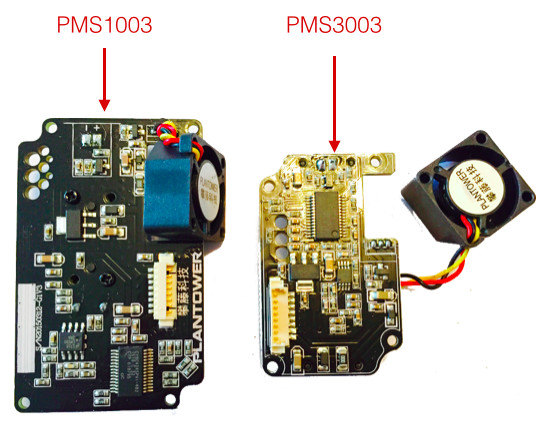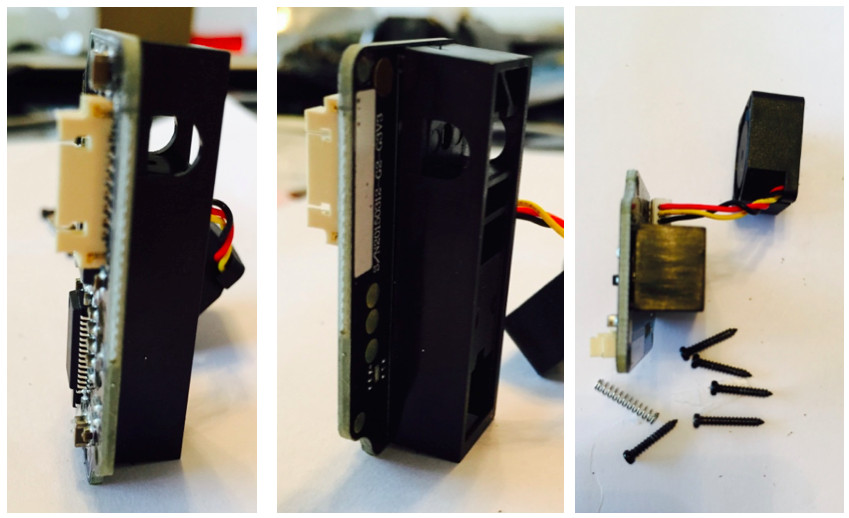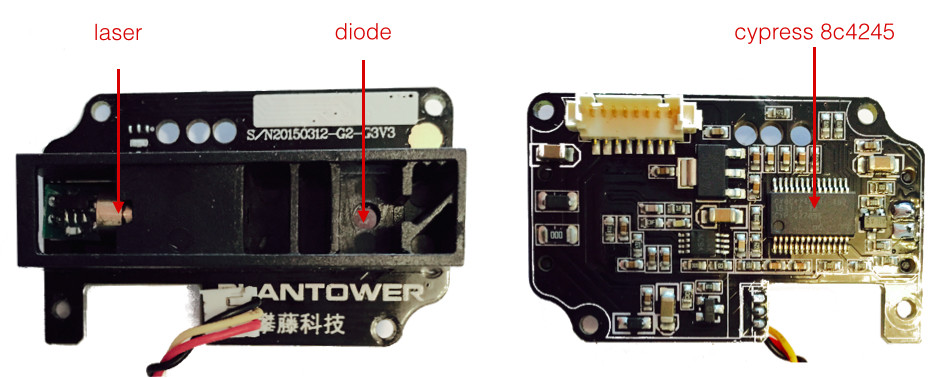Aktie: aqicn.org/sensor/pms3003/de/
For a complete list of all the Air Quality Sensors test on the World Air Quality Index project, check our sensor overview page. 
The PMS 3003 Sensor
Spezifikationen
- Parameters :Index (Unit )
- Measuring range :0.3 to 1.0 ; 1.0 to 2.5 ; 2.5 to 10 (mm)
- Counting efficiency :50%@0.3um 98% @> = 0.5 um
- Response time :≤ 10 sec
- DC supply voltage :5 V
- Operating current :120 mA
- Standby Current :≤ 200 µA
- Data interface level :L <0.8 @ 3.3 H> 2.7@3.3 V
- Operating temperature range :-20 ~ + 50 °C
- Operating humidity range :0 to 99%
- MTBF :≥ 3 Year
- Size :65 × 42 × 23 mm
Schauen Sie sich den Sensor von innen an



- PIN1 :VCC :Power Supply (5V).
- PIN2 :GND :Ground.
- PIN3 :SET :Standby mode (when 0), operating mode (when 1)
- PIN4 :RXD :Serial receive / TTL level @ 3.3V.
- PIN5 :TXD :Serial transmit / TTL level @ 3.3V.
- PIN6 :RESET :Module reset / TTL level @ 3.3V.
- PIN7,8 :NC :Not connected.
Echtzeitdaten
- PM1 count: -,
- PM2.5 count: -,
- PM10 count: -,
- updated on - - (China time).
- PM1 count: -,
- PM2.5 count: -,
- PM10 count: -,
- updated on - - (China time).
Time series graphs
--
For the list of all air quality sensors, check the Sensor Overview page
Read or publish comments (they rely on Disqus)
